 December 15, 2016 John E. Ross, KD8IDJ, Editor
| |||||||
Amateur Radio Parity Act Bill Unable to Overcome Florida Senator's Objections The Amateur Radio Parity Act, H.R. 1301, suffered an unbefitting demise on December 9 as the 114th Congress drew to a close. After passing the House of Representatives on a unanimous vote earlier this fall, the bill stalled in the Senate due to the intervention of only one member, Sen. Bill Nelson (D-FL). The measure would have directed the FCC to extend its rules relating to reasonable accommodation of Amateur Service communications to private land-use restrictions, such as covenants, conditions, and restrictions (CC&Rs) imposed by homeowners associations.
In a final meeting with Nelson's staff as the 114th Congress neared adjournment, it became clear that no matter what was said or done, the Senator would oppose the bill and refuse to allow it to move forward. Because the measure had not been put on the floor schedule, the only way it could have passed the Senate would have been through a process called "unanimous consent." A Senate member may request unanimous consent on the floor to set aside rules and expedite proceedings. If any single Senator objects, though, the request is rejected. The unhappy ending followed nearly 2 years of intense effort on the part of ARRL and thousands of its members, who contacted their Congressional representatives to urge their support of the measure on Capitol Hill. The ARRL Board of Directors is expected to discuss the future of the initiative at its January meeting. IARU Continues Preparations for World Radiocommunication Conference 2019 Work already is under way by the International Amateur Radio Union (IARU) to address agenda items of interest to Amateur Radio during the run-up to the 2019 World Radiocommunication Conference (WRC-19). The International Telecommunication Union (ITU) convenes WRCs every 3 or 4 years; the last WRC was in 2015. The IARU's prime focus is spectrum privileges -- gaining or retaining spectrum for the Amateur Radio services and spectrum protection -- making sure that amateur spectrum remains available for use and free from serious man-made interference. The IARU works within international standards organizations and with regional telecommunication organizations to accomplish its goals.
IARU will continue to be active in ITU and regional telecommunication organizations as preparations go forward for WRC-19. In the coming weeks, IARU plans to participate in CEPT's Conference Preparatory Group for WRC-19 and in its Project Team meetings. Read more. The Doctor Will See You Now! "Antenna System Troubleshooting" is the topic of the latest episode of the "ARRL The Doctor is In" podcast. Listen...and learn!
Every 2 weeks, your host, QST Editor-in-Chief Steve Ford, WB8IMY, and the Doctor himself, Joel Hallas, W1ZR, will discuss a broad range of technical topics. You can also e-mail your questions to doctor@arrl.org, and the Doctor may answer them in a future podcast. Enjoy "ARRL The Doctor is In" on Apple iTunes, or by using your iPhone or iPad podcast app (just search for "ARRL The Doctor is In"). You can also listen online at Blubrry, or at Stitcher (free registration required, or browse the site as a guest) and through the free Stitcher app for iOS, Kindle, or Android devices. If you've never listened to a podcast before, download our beginner's guide. National Parks on the Air Update The ARRL National Parks on the Air (NPOTA) program is on the verge of making history. With less than 2 weeks to go until the program concludes on December 31, NPOTA Activators have made more than 995,000 contacts from National Park Service units this year, and it appears certain that the count will top 1 million before year's end.
But the fun isn't over yet! More than 30 NPOTA activations are scheduled through the end of 2016, including Fort Scott National Historic Site in Kansas, and the Amistad National Recreation Area in Texas. NPOTA Activators have promised a burst of activity all across the country in the final week, especially all day on Saturday, December 31. Work as many NPOTA stations as you can! Details about these and other upcoming activations can be found on the NPOTA Activations calendar. Keep up with the latest NPOTA news on Facebook. Follow NPOTA on Twitter (@ARRL_NPOTA). Commemorative Special Event Reenacts 1921 Amateur Radio Transatlantic Reception Radio amateurs in the US and in Scotland have reenacted the first successful transatlantic reception of a shortwave Amateur Radio signal nearly a century earlier. Special event station N1BCG in Greenwich, Connecticut, and GB2ZE in Ardrossan, Scotland, completed contacts on SSB and on CW during the December 11 event. ARRL, the Radio Society of Great Britain (RSGB), and the Radio Club of America (RCA) partnered to support the activity, organized by ARRL CEO Tom Gallagher, NY2RF, and Clark Burgard, N1BCG, who loaned his history-rich call sign for the occasion.
On December 11, 1921, in Ardrossan, Scotland, reception of a radio signal transmitted from an RCA test station -- located in a small shack on the Greenwich, Connecticut, property of Minton Cronkhite, 1BCG -- helped to usher in the age of global communication. In Scotland, American Paul Godley, 2ZE, clearly heard the signal using a receiver of his own design. "These events are fun, because they're timely and cause us to focus on the history and on the people who made history," Gallagher said. "We were very pleased with the tenor of it and with the media coverage, and we were happy to make the connection with GB2ZE, although we would have preferred to have made it on 160 meters, where it would have been closer to the frequency used in 1921." The 1921 transatlantic test, on CW, was conducted on a wavelength of 230 to 235 meters (about 1.3 MHz). The ARRL transatlantic tests proved the value of the shorter wavelengths, which had long been considered worthless for long-distance communication.
Burgard spoke on 20-meter SSB with GB2ZE, operated by Jason O'Neill, GM7VSB, in Ardrossan. A bit later, ARRL Field Services Manager Dave Patton, NN1N, chatted with GB2ZE on CW. "After working GB2ZE on 20 meters, I was reminded of how much of a challenge the RCA ops had using 200 meters," Patton said. "Hearing signals in Europe from across the Atlantic had to be a tremendous thrill for Godley and the others listening." The first message sent by Burgard from Greenwich to Ardrossan on Sunday morning repeated the original 1921 text. Patton retransmitted the message 30 minutes later on CW. Describing the special event as "a rewarding experience," Patton said the entire team worked together to build a Field Day-style station in wintry weather. The complement of equipment included what he called "a few fully armed vintage AM stations," as well as modern gear. Among the older pieces was a 1950s-era transmitter owned by rocker Joe Walsh, WB6ACU, of the Eagles.
The antennas were simple dipoles. With about a dozen operators active, the special event logged nearly 525 contacts, more than 100 of them on AM, through conditions that were only fair. To highlight the historical nature of the occasion, Godley's grandchildren Bruce Godley Littlefield and his sister, Janice Taylor, visited, and Littlefield brought his grandfather's complete log books of the experiment, as well as numerous photos and letters from ARRL. "We enjoyed the opportunity to reconnect the Godley history with that of ARRL and the Radio Club of America," Littlefield said afterward. Read more. Support ARRL and Earn an Extra 5,000 Points Apply for the ARRL Visa Signature® Card and, upon approval, enjoy a long list of great everyday benefits. Plus now, as a special gift, you'll also earn an additional 5,000 Bonus Points (subject to credit approval) on your account after you make your first purchase.
Radio Amateurs Assist in Wake of Indonesian Earthquake Radio amateurs provided emergency communication support during the response to a December 7 magnitude 6.5 earthquake in Indonesia's Aceh Province. The death toll was reported at 100, with nearly 300 injured. The IARU Region 3 Disaster Communications Committee's Dani Hidayat, YB2TJV, reported that it took 2 hours for the ham radio group from the Indonesian Amateur Radio Organization (ORARI), Aceh Region, to reach the earthquake zone. A team led by Abdullah Ali, YB6AA, and Ismul Huda, Search-and-rescue teams checked the rubble of hundreds of structures, and displaced residents took shelter in a makeshift refugee camp. -- Thanks to Jim Linton, VK3PC, chairman, IARU Region 3 Disaster Communications Committee ARISS Celebrates 20th Anniversary, Plans for Future of Amateur Radio in Human Spaceflight ARISS-International delegates celebrated 20 years of Amateur Radio on the International Space Station (ARISS) when they met November 15-18 at the International Space Center Conference Facility in Houston, Texas, to continue planning for the years ahead. More than 50 delegates and guests from Russia, Japan, Italy, Germany, the UK, and North America took part, and teleconferencing let individuals unable to attend in person to join the proceedings. An international group interested in installing and operating an Amateur Radio station on the ISS first met in November 1996 at Johnson Space Center, and ARISS was born as a result of that gathering.
Hardware sessions discussed finalizing designs for the Kenwood TM-D710GA dual-band radio and interoperable radio system, which includes a new power supply. Participants also heard a review of educational outcomes. Ronny Risinger, KC5EES, a government teacher at Language Arts and Sciences Academy in Austin, Texas, discussed classroom integration of ham radio and student outcomes. Delegates also saw a demonstration of a standardized HamTV ground receiver constructed by Ciaran Morgan, M0XTD.
"A vision of Amateur Radio in space exploration beyond the ISS was also discussed and action taken to develop a position statement about the program's intention to be involved in future journeys into space," Johnson recounted. "This position statement will be used as a basis for discussions with key industry leaders involved in projects in development for the next journeys to the Moon and to Mars." Contributions to ARISS are welcome via the ARISS website (click on the "Donate to the ARISS Annual Fund" button) or via the AMSAT website (click on the "ARISS Donate" button). Read more. -- Thanks to ARISS via AMSAT News Service for some information Middle School Students' "TubeSat" Set for ISS Deployment; Other Launches Pending The cargo ship carrying the Tancredo-1 "TubeSat" -- so called because of its cylindrical form factor -- launched on schedule from Japan on December 9. Built by 10- to 14-year-old middle schoolers in Brazil, Tancredo-1 carries an Amateur Radio payload. Tancredo-1 went into space inside the TuPOD TubeSat deployer, which is expected to be ejected into space from the ISS on December 19 by the JEM Small Satellite Orbital Deployer (J-SSOD). It will, in turn, eject Tancredo-1 into orbit on December 21. Once in space, Tancredo-1 should start transmitting telemetry.
Tancredo-1 is the first satellite of the UbatubaSat Project, a STEM initiative at Tancredo Neves Public School in Ubatuba, São Paulo, Brazil. The project is supported by the Brazilian Institute for Space Research and the Brazilian Space Agency. Tancredo-1 will initially have the same orbit as the ISS. The UbatubaSat project team and AMSAT-BR has asked for reception reports. Tancredo-1 will transmit on 437.200 MHz using 1,200 bps AFSK AX.25. Submit reports via e-mail. According to information filed with the IARU Satellite Coordinator, Tancredo-1 has an onboard voice recorder that will transmit a message chosen through a competition among students from schools in Ubatuba.
The December 9 launch also carried Turkey's UBAKUSAT CubeSat. Equipped with a 145/435 MHz (V/U) SSB/CW Amateur Radio transponder and a CW beacon, UBAKUSAT will be deployed from the ISS next year. The satellite is being developed by Istanbul Technical University's Space Systems Design and Test Lab (SSDTL) along with the Turkish Amateur Satellite Technologies Organization (TAMSAT) and other entities, including the Ministry of Transportation, Communication and Maritime, in collaboration with the Japanese government. On December 26, the China Center for Aerospace Science and Technology's BY70-1 satellite is expected to launch from Jiuquan Satellite Launch Center into a 530-kilometer Sun-synchronous orbit. The 3-axis stabilized 2U CubeSat will carry a Mode V/U FM transponder, with an uplink on 145.920 MHz, and a downlink on 436.200 MHz
Mexico Not Yet Extending Operating Permission to Non-Mexican Radio Amateurs Broad changes in Mexico's radiocommunication regulatory environment 2 years ago continue to hinder Amateur Radio licensing there and still do not provide reciprocal permission for non-Mexican radio amateurs to operate south of the border. Mexico's International Amateur Radio Union (IARU) member society, the Federation of Mexican Radio Amateurs (FMRE), has been working with the new regulator, the Federal Telecommunications Institute (IFT) to craft more Amateur Radio-friendly licensing procedures and regulations, and there has been a little positive movement. The new regulatory regime considers the radio spectrum as an exploitable resource, and all former Amateur Radio regulations have been deemed null and void.
While the IFT has not yet determined what to do about foreign radio amateurs wishing to operate in Mexico, the agency has received 45 petitions to do so and is considering how it can issue permits; a foreigner cannot obtain a license under the new law, but may be given permission to operate as XE#/<home call sign>. Further, no regulations are in place regarding power output, license classes, licensing zones, interference, and other regulatory aspects. Read more. Getting It Right! A photo caption in December 8 edition of The ARRL Letter incorrectly identified the radio amateur holding the Worked All States certificate he earned during the 2015 ARRL 10 Meter Contest. The op is Milt Withers, AD5XD, of Richardson, Texas. Our apologies! In Brief...
The K7RA Solar Update Tad Cook, K7RA, Seattle, reports: Average daily solar indices over the past week were lower than the previous 7 days, with the average daily sunspot number declining from 40.9 to 13, and the average daily solar flux dropping by 10 points from 82.2 to 72.2. Geomagnetic indicators were higher, with the average daily planetary A index rising from 4.9 to 13.3, and the mid-latitude A index from 3.4 to 9.
Predicted planetary A index is 5 on December 15-16; 8 on December 17-18; 15 on December 19-20; 25, 30, 12, 10, and 8 on December 21-25; 5 on December 26-January 1; 8, 10, 20, and 22 on January 2-5; 16 on January 6-7; 8 on January 8; 5 on January 9-12; 8 on January 13-14; 12, 16, 22, and 30 on January 15-18; 12, 10, and 8 on January 19-21, and 5 for the remainder of the 45-day forecast. Sunspot numbers for December 8 through 14 were 14, 12, 0, 13, 13, 14, and 25, with a mean of 13. The 10.7-centimeter flux was 74.8, 72.9, 72.2, 71.4, 70.8, 71.2, and 72.4, with a mean of 72.2. Estimated planetary A indices were 23, 25, 16, 15, 6, 4, and 4, with a mean of 13.3. Estimated mid-latitude A indices were 14, 18, 11, 11, 5, 2, and 2, with a mean of 9. Send me your reports or observations, especially from the ARRL 10 Meter Contest.
. . . . .
Just Ahead in Radiosport
See the ARRL Contest Calendar for more information. For in-depth reporting on Amateur Radio contesting, subscribe to The ARRL Contest Update via your ARRL member profile e-mail preferences. Upcoming ARRL Section, State, and Division Conventions
Find conventions and hamfests in your area.
. .
Subscribe to...
Free of charge to ARRL members...
| |||||||
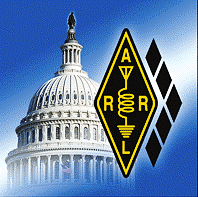 "[During 2016] Nelson received thousands of e-mails, letters, and phone calls from concerned constituents asking for his support of H.R. 1301. Numerous meetings were held with his senior staff in an effort to move the legislation forward," ARRL said in a
"[During 2016] Nelson received thousands of e-mails, letters, and phone calls from concerned constituents asking for his support of H.R. 1301. Numerous meetings were held with his senior staff in an effort to move the legislation forward," ARRL said in a .jpg) In the past month, IARU representatives have attended the European Conference of Postal and Telecommunications Administrations (
In the past month, IARU representatives have attended the European Conference of Postal and Telecommunications Administrations (.jpg) Sponsored by
Sponsored by  National Parks on the Air has proven to be one of the most successful and popular on-air activities ARRL has ever created. Tens of thousands of radio amateurs made at least one contact with an NPOTA Activator in 2016, and nearly 1,400 Activators went out and transmitted from a park. One million contacts from portable operations -- many of them using under 100 W and simple wire antennas -- is an amazing feat. Congratulations to every NPOTA Activator who hit the trail this year and helped NPOTA to reach its goal!
National Parks on the Air has proven to be one of the most successful and popular on-air activities ARRL has ever created. Tens of thousands of radio amateurs made at least one contact with an NPOTA Activator in 2016, and nearly 1,400 Activators went out and transmitted from a park. One million contacts from portable operations -- many of them using under 100 W and simple wire antennas -- is an amazing feat. Congratulations to every NPOTA Activator who hit the trail this year and helped NPOTA to reach its goal!
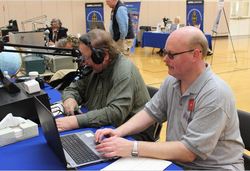

 Take advantage of these great everyday Signature Card benefits:
Take advantage of these great everyday Signature Card benefits: YB6AG, and others supported emergency communications in the field at Pidie Jaya. Zainal Abidin, YC6FZ, was injured when his house collapsed, but his family was said to be safe; Huda took Abidin to the Banda Aceh Hospital for treatment. YB2TJV reported that 40 meters and 2 meters were used for emergency traffic. The quake flattened houses and buildings, caused infrastructure damage, and left large cracks in roads in the worst-affected districts of Pidie Jaya and Pidie.
YB6AG, and others supported emergency communications in the field at Pidie Jaya. Zainal Abidin, YC6FZ, was injured when his house collapsed, but his family was said to be safe; Huda took Abidin to the Banda Aceh Hospital for treatment. YB2TJV reported that 40 meters and 2 meters were used for emergency traffic. The quake flattened houses and buildings, caused infrastructure damage, and left large cracks in roads in the worst-affected districts of Pidie Jaya and Pidie. "The international partners celebrated the dedication and contributions of volunteers who have sustained it over the challenges of the past 20 years," said ARRL Education Services Manager Debra Johnson, K1DMJ, who attended on behalf of ARRL. "It was clear that the vision to make the excitement of space exploration accessible to students and the challenge of participating in space activities through Amateur Radio is still very much alive." Rosalie White, K1STO, also represented ARRL at the gathering.
"The international partners celebrated the dedication and contributions of volunteers who have sustained it over the challenges of the past 20 years," said ARRL Education Services Manager Debra Johnson, K1DMJ, who attended on behalf of ARRL. "It was clear that the vision to make the excitement of space exploration accessible to students and the challenge of participating in space activities through Amateur Radio is still very much alive." Rosalie White, K1STO, also represented ARRL at the gathering..jpg)
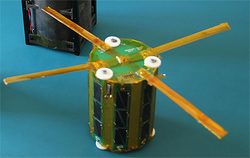

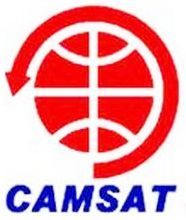 China's CAMSAT is reported to be working closely with a Beijing government aerospace contractor to build two microsatellites with Amateur Radio linear transponders -- CAS-4A and CAS-4B. Each spacecraft will carry a 70-centimeter/2-meter (U/V) 100 mW SSB/CW linear transponder, a 2-meter CW 50 mW telemetry beacon, and an AX.25 4.8 kbps GMSK 100 mW telemetry downlink. The transponders will have the same technical characteristics, but will employ different frequencies for their 70-centimeter uplinks and 2-meter downlinks. Launch is anticipated in late March. -- Thanks to AMSAT News Service, IARU
China's CAMSAT is reported to be working closely with a Beijing government aerospace contractor to build two microsatellites with Amateur Radio linear transponders -- CAS-4A and CAS-4B. Each spacecraft will carry a 70-centimeter/2-meter (U/V) 100 mW SSB/CW linear transponder, a 2-meter CW 50 mW telemetry beacon, and an AX.25 4.8 kbps GMSK 100 mW telemetry downlink. The transponders will have the same technical characteristics, but will employ different frequencies for their 70-centimeter uplinks and 2-meter downlinks. Launch is anticipated in late March. -- Thanks to AMSAT News Service, IARU FMRE's new president, Alfonso "Poncho" Tamez, XE2O, is spearheading the society's negotiations with the IFT. At FMRE's National Convention in September, IFT Commissioner Adriana Labardini announced to loud cheers that her agency will get Amateur Radio licensing going again, after a 2-year delay. FMRE has estimated that of the 3,500 existing Mexican Amateur Radio licenses in place before the new law went into effect, more than 1,000 have expired and their renewal was put on hold until the IFT works out procedural details. She said the IFT expects to process more than 800 applications by year's end, with another batch of more than 1,400 to follow. An initial license will cost about $30 US. The status of Amateur Radio clubs has also been put in limbo by the new regulatory regime.
FMRE's new president, Alfonso "Poncho" Tamez, XE2O, is spearheading the society's negotiations with the IFT. At FMRE's National Convention in September, IFT Commissioner Adriana Labardini announced to loud cheers that her agency will get Amateur Radio licensing going again, after a 2-year delay. FMRE has estimated that of the 3,500 existing Mexican Amateur Radio licenses in place before the new law went into effect, more than 1,000 have expired and their renewal was put on hold until the IFT works out procedural details. She said the IFT expects to process more than 800 applications by year's end, with another batch of more than 1,400 to follow. An initial license will cost about $30 US. The status of Amateur Radio clubs has also been put in limbo by the new regulatory regime. A revised IFT draft of Amateur Radio licensing procedures included specific provisions to grant Amateur Radio operating permission and to make licensing requirements more consistent with the nature of the Amateur Radio service. But significant gaps still exist. At this point, it is not even necessary to take an examination to obtain an Amateur Radio license -- called a "concession" -- in Mexico.
A revised IFT draft of Amateur Radio licensing procedures included specific provisions to grant Amateur Radio operating permission and to make licensing requirements more consistent with the nature of the Amateur Radio service. But significant gaps still exist. At this point, it is not even necessary to take an examination to obtain an Amateur Radio license -- called a "concession" -- in Mexico. ARRL Rookie Roundup CW is Sunday, December 18: The 2016 CW
ARRL Rookie Roundup CW is Sunday, December 18: The 2016 CW 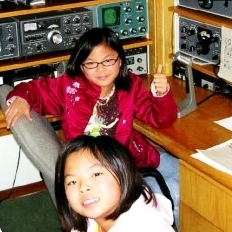 Next Kids Day is Saturday, January 7: The first Saturday in January is Kids Day -- the time to get youngsters on the air to share in the joy and fun that Amateur Radio can provide. Kids Day gets under way on Saturday, January 7, at 1800 UTC and concludes at 2359 UTC. Sponsored by the Boring (Oregon) Amateur Radio Club, this event has a simple exchange, suitable for younger operators: First name, age, location, and favorite color. After that, the contact can be as long or as short as each participant prefers. Kids Day is the perfect opportunity to open your shack door and invite kids over to see what Amateur Radio has to offer.
Next Kids Day is Saturday, January 7: The first Saturday in January is Kids Day -- the time to get youngsters on the air to share in the joy and fun that Amateur Radio can provide. Kids Day gets under way on Saturday, January 7, at 1800 UTC and concludes at 2359 UTC. Sponsored by the Boring (Oregon) Amateur Radio Club, this event has a simple exchange, suitable for younger operators: First name, age, location, and favorite color. After that, the contact can be as long or as short as each participant prefers. Kids Day is the perfect opportunity to open your shack door and invite kids over to see what Amateur Radio has to offer. (2).jpg) 60 Meter News from Europe and Elsewhere: The 60 Meter DX Group reports that Swedish Post and Telecom is issuing temporary (6-month) "experimental" licenses for access to 5,351.5-5,366.5 kHz, replacing four channels, 5,310, 5,320, 5,380, and 5,390 kHz. There is a fee. The WRC-15 recommendations regarding 5 MHz have not yet been implemented, but that may happen by January 2018, when the next national band plan is released. In the interim, apparently anyone, even non-hams, can apply for an experimental license. Sweden's experimental band permits 15 W EIRP. In Denmark, radio amateurs now have "VFO access" to 5,250-5,450 kHz, all modes, at a maximum power of 1 kW at the antenna feed point. In Finland, radio amateurs gained access on December 9 to 5,351.5 to 5,366.5 kHz, with 15 W EIRP. Previously only club stations could obtain special permission to use seven 5-MHz channels with a maximum power of 50 W on USB. Valid special club licenses will continue in effect until the end of the license term. Switzerland's USKA has
60 Meter News from Europe and Elsewhere: The 60 Meter DX Group reports that Swedish Post and Telecom is issuing temporary (6-month) "experimental" licenses for access to 5,351.5-5,366.5 kHz, replacing four channels, 5,310, 5,320, 5,380, and 5,390 kHz. There is a fee. The WRC-15 recommendations regarding 5 MHz have not yet been implemented, but that may happen by January 2018, when the next national band plan is released. In the interim, apparently anyone, even non-hams, can apply for an experimental license. Sweden's experimental band permits 15 W EIRP. In Denmark, radio amateurs now have "VFO access" to 5,250-5,450 kHz, all modes, at a maximum power of 1 kW at the antenna feed point. In Finland, radio amateurs gained access on December 9 to 5,351.5 to 5,366.5 kHz, with 15 W EIRP. Previously only club stations could obtain special permission to use seven 5-MHz channels with a maximum power of 50 W on USB. Valid special club licenses will continue in effect until the end of the license term. Switzerland's USKA has 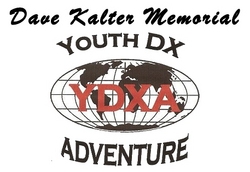 Dave Kalter Youth DX Adventure Offering Complete Ham Station to Essay Contest Winner: The Dave Kalter Youth DX Adventure (YDXA) has announced an exciting
Dave Kalter Youth DX Adventure Offering Complete Ham Station to Essay Contest Winner: The Dave Kalter Youth DX Adventure (YDXA) has announced an exciting  Predicted solar flux is 70 on December 15-17; 75 on December 18-20; 80 and 86 on December 21-22; 88 on December 23-27; 86 on December 28-29; 88 on December 30-January 1; 86 on January 2-3; 84 and 82 on January 4-5; 80 on January 6-7; 73 on January 8-9; 75 on January 10-14; 82 on January 15-16; 86 on January 17-18; 88 on January 19-23, and 86 on January 24-25.
Predicted solar flux is 70 on December 15-17; 75 on December 18-20; 80 and 86 on December 21-22; 88 on December 23-27; 86 on December 28-29; 88 on December 30-January 1; 86 on January 2-3; 84 and 82 on January 4-5; 80 on January 6-7; 73 on January 8-9; 75 on January 10-14; 82 on January 15-16; 86 on January 17-18; 88 on January 19-23, and 86 on January 24-25.








